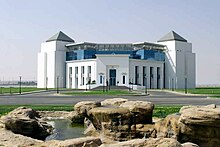
The Bibliotheca Alexandrina (BA) is a major library and cultural center on the shore of the Mediterranean Sea in Alexandria, Egypt. It is a commemoration of the Library of Alexandria, once one of the largest libraries worldwide, which was lost in antiquity. The idea of reviving the old library dates back to 1974 when a committee set up by Alexandria University selected a plot of land for its new library. Construction work began in 1995, and after some US$220 millions had been spent, the complex was officially inaugurated on 16 October 2002. In 2009, the library received a donation of 500,000 books from the Bibliothèque nationale de France (BnF). The gift makes the Bibliotheca Alexandrina the sixth-largest Francophone library in the world.

The 2004 Sinai bombings were three bomb attacks targeting tourist hotels in the Sinai Peninsula, Egypt, on 7 October 2004. The attacks left 34 people dead and 171 injured.
Firooz Malekzadeh was one of Iran's top cinematographers in the 1970s and 1980s. He has worked on over 50 films in Iran with many respected directors including Bahram Beizai, Abbas Kiarostami and Amir Naderi.
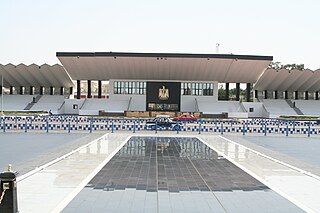
Terrorism in Egypt in the 20th and 21st centuries has targeted the Egyptian government officials, Egyptian police and Egyptian army members, tourists, Sufi Mosques and the Christian minority. Many attacks have been linked to Islamic extremism, and terrorism increased in the 1990s when the Islamist movement al-Gama'a al-Islamiyya targeted high-level political leaders and killed hundreds – including civilians – in its pursuit of implementing traditional Sharia law in Egypt.
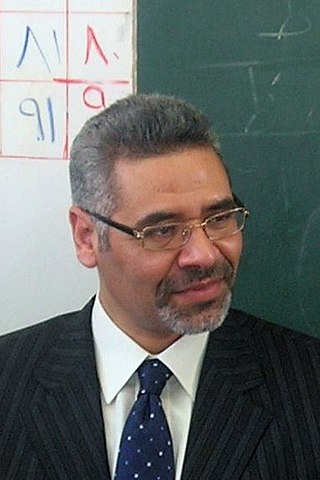
Ayman Zohry is a demographer/geographer and expert on migration studies based in Cairo, Egypt. He was born in Souhag, Egypt. Zohry received his Ph.D. from the University of Sussex in 2002. He is a leading researcher in the field of migration studies in Egypt with a special focus on irregular migration.

Sherif Sonbol is an Egyptian photographer specializing in architecture, scenic fine arts and photojournalism.
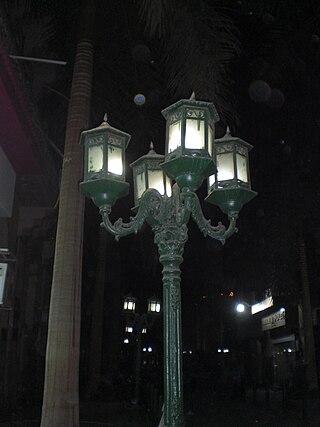
Qasr El Nil Street is a street in downtown Cairo, Egypt, one of the biggest streets in Cairo, with many businesses, restaurants, and an active nightlife.

Egypt's environmental problems include, but are not limited to, water scarcity, air pollution, damage to historic monuments, animal welfare issues and deficiencies in its waste management system.

The Mogamma is a government building in Cairo, Egypt. The Mogamma was the result of a series of master plans for the Qasr el Nil area, which used to be occupied by the British barracks. In 1945 when King Farouk ordered the demolition of the barracks upon the departure of British troops from the area, a series of urban planning proposals ensued. The idea for a centralised, all-in-one administrative building emerged from the 1945 plans. Construction began in 1946, and ended in 1949. The building's style reflects typical 1940s modernism, and government buildings in the same style can be found in Buffalo, New York, and Paris. Contrary to popular belief, there is no Soviet association or inspiration, and the building was not constructed by the government of Egypt's second President, Gamal Abdel Nasser. Indeed, Nasser did not become the leader of Egypt until November 1954, several years after the building was completed.

The Egyptian Ministry of Communications and Information Technology (MCIT) is a government body headquartered in Smart Village Egypt, Giza Governorate, in the Cairo metropolitan area. Established in 1999, the Ministry is responsible for information and communications technology (ICT) issues in the Arab Republic of Egypt including the planning, implementation and operation of government ICT plans and strategies. It is led by the Minister of Communications and Information Technology, who is nominated by the Prime Minister and is a member of the cabinet. The current ICT Minister is Amr Talaat who assumed the position on 14 June 2018.

Smart Village is a high-technology business district in the city of 6th of October in Giza Governorate, Egypt, established by Presidential Decree no.355 in 2000, with activities starting in 2001. It is a business district with office buildings, retail shops, entertainment, factories and green spaces. It is located on the Cairo-Alexandria Desert Road, slightly west of Cairo, and occupies an area of 450 feddans. Its owned by Smart Villages Development and Management Company.
The Archeological Map of Egypt is an archeological Geographical Information System (GIS) documenting Egyptian archaeological sites at the national, site, and monument levels.
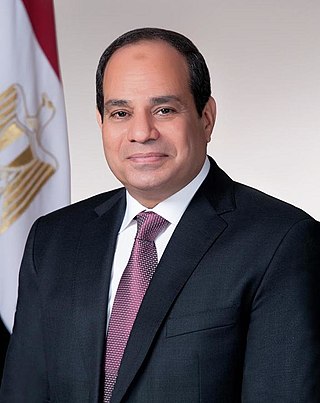
Abdel Fattah Saeed Hussein Khalil el-Sisi is an Egyptian politician and retired military officer who has served as the sixth and current president of Egypt since 2014. Before retiring as a general in the Egyptian military in 2014, Sisi served as Egypt’s deputy prime minister from 2013 to 2014, as its minister of defense from 2012 to 2013, and as its director of military intelligence from 2010 to 2012. He was promoted to the rank of Field Marshal in January 2014.

The Sinai insurgency is an ongoing insurgency in the Sinai Peninsula, Egypt, that was commenced by Islamist militants against Egyptian security forces, which have also included attacks on civilians. The insurgency began during the Egyptian Crisis, during which the longtime Egyptian president Hosni Mubarak was overthrown in the 2011 Egyptian revolution.
Contemporary art in Egypt is a term used to refer to visual art, including installations, videos, paintings, or sculptures, developed in the Egyptian art scene. While the contemporary art scene is mainly concentrated in Cairo and Alexandria, it is developing fast with the emergence of spaces for artists, and support from the public or from abroad. Many Egyptian artists use the Egyptian contemporary art scene as a ramp toward the international art scenes.

The Ministry of Higher Education and Scientific Research is one of the governmental ministries of Egypt and part of the cabinet. It was formed in 1961.
The following is a chronological timeline of fatal incidents during the ongoing Sinai insurgency, which was invigorated by a period of relative instability and political turmoil in Egypt, beginning with the 2011 uprising against former autocrat Hosni Mubarak. Insurgent attacks, however, intensified significantly following the July 2013 coup that ousted Muslim Brotherhood-backed president Mohamed Morsi and subsequent crackdown on his supporters.

The Egyptian pavilion is a national pavilion of the Venice Biennale. It houses Egypt's official representation during the Biennale. The building is part of a complex that Brenno Del Giudice designed in 1932 to house Venetian decorative arts on Sant'Elena Island—an expansion of the Biennale from its main Giardini area. The building later served as Switzerland's national pavilion before the country moved to a new pavilion in 1952 and left the building to Egypt. The national pavilions for Serbia and Venice flank the Egyptian pavilion. Egypt's 1995 exhibition won the Biennale's Golden Lion award for best national pavilion.

The Pharaohs' Golden Parade was an event held in Cairo, Egypt on 3 April 2021, during which twenty-two mummies belonging to Kings and Queens of the New Kingdom of Ancient Egypt were moved from the Egyptian Museum in Tahrir Square to the National Museum of Egyptian Civilization in Fustat.
